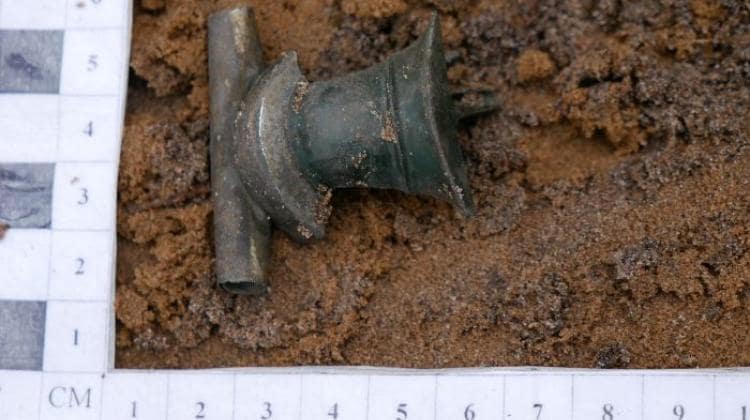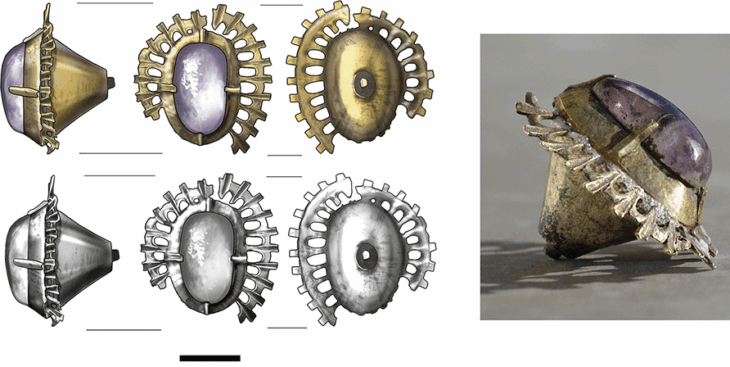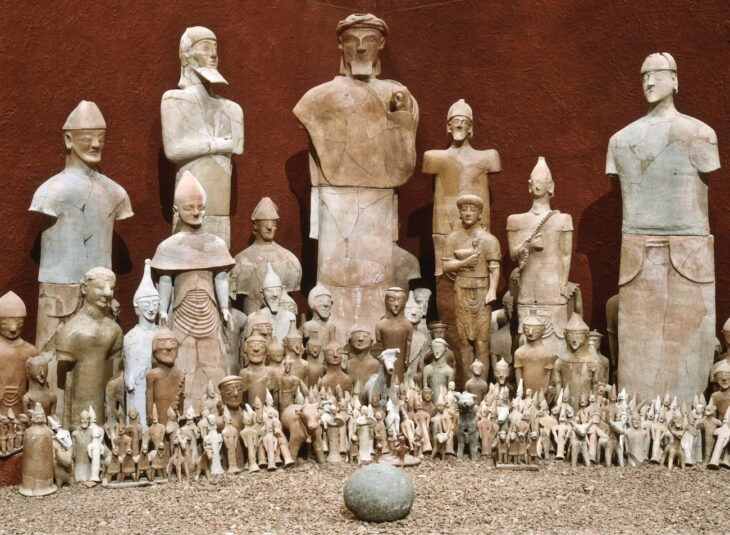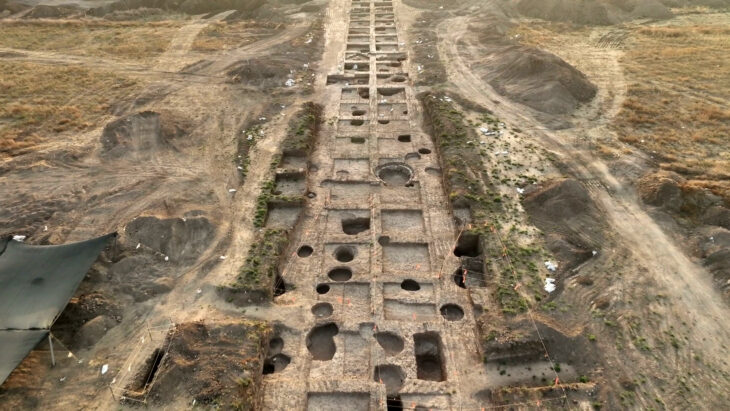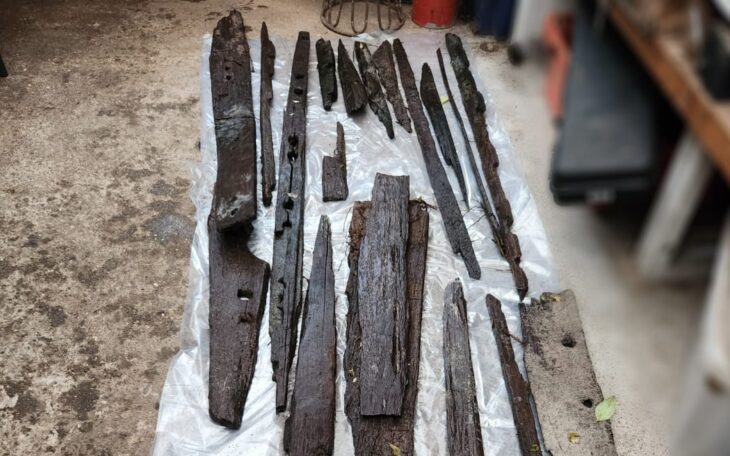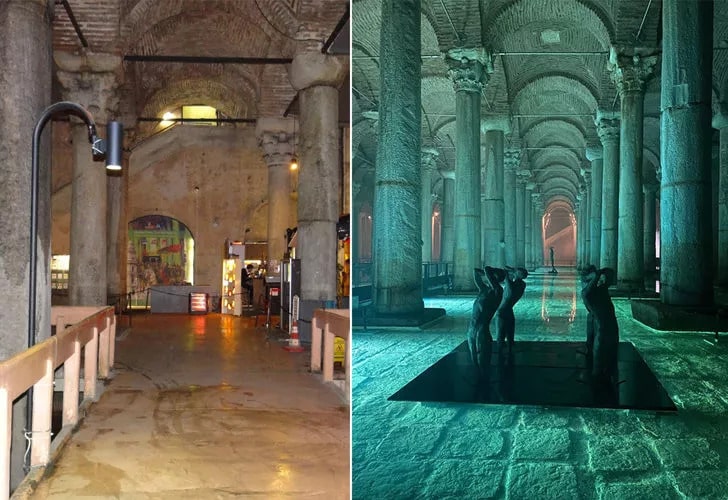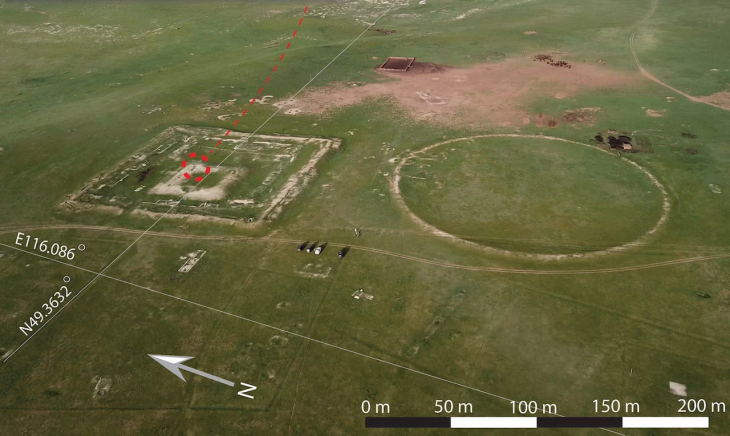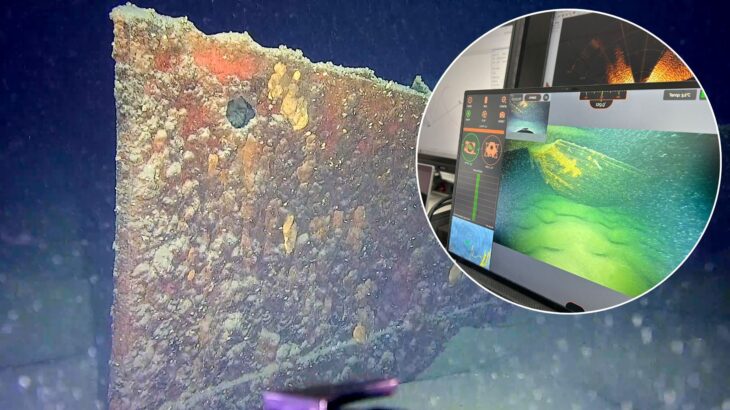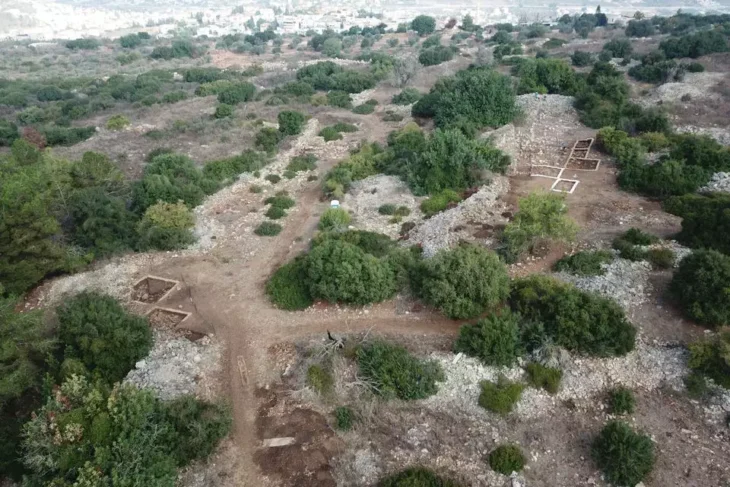Local history enthusiasts from the Wendrusz Historical and Exploration Society have discovered four fibulae, a ring, and fragments of decorations in the Borki forest district in the Masuria region, northern Poland. They handed over the finds to the monument protection services.
The Historical and Exploratory Society of the Węgorzewo Land “Wendrusz” announced a significant archaeological discovery via social media.
Field searches were conducted with consent from heritage protection authorities and the landowner, the Borki forest district.
According to the society, searchers expected to find buttons and shells from World War II. Instead, the society’s Bartosz Łaszczuk and Tomasz Trypuć discovered archaeological monuments in the form of four brooches (fibulae), a ring, and fragments of decorations, including probably more fibulae.
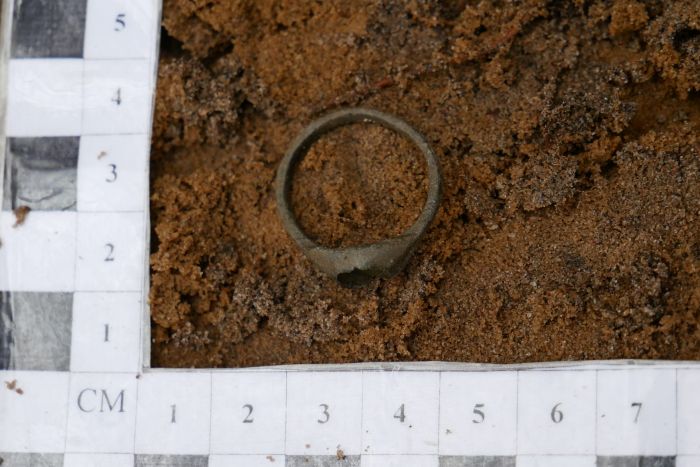
Local history enthusiasts speculate that the find might point to an early Bogaczewo or Sudovian culture cemetery or settlement. Based on initial dating, the artifacts date to the late 2nd to early 3rd century, a time frame shaped by Roman culture.
📣 Our WhatsApp channel is now LIVE! Stay up-to-date with the latest news and updates, just click here to follow us on WhatsApp and never miss a thing!!
“As soon as we realized what we were discovering, we stopped the search in this area. Each such find is photographed with GPS coordinates and precisely marked on a digital map. This is to aid further archaeological research of the site in the future,’ Anna Dymkowska-Kowalska from the Wendrusz society told PAP”
Magdalena Kozicka, an archaeology specialist, stated that the site would be considered for inclusion in the monument registry, and the artifacts will be handed over to a regional museum.
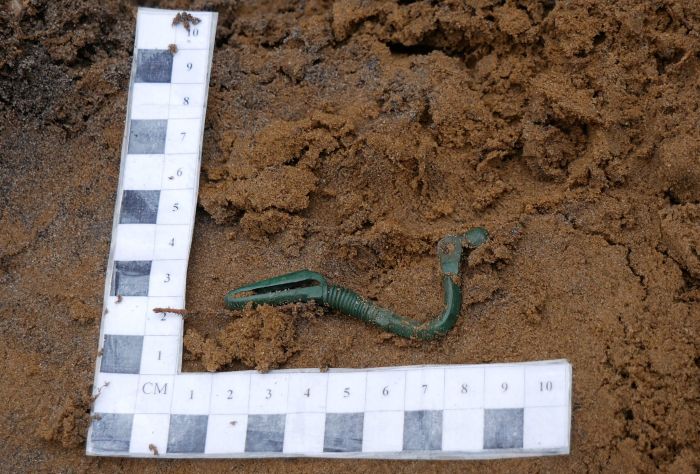
The Historical and Exploratory Society of the Węgorzewo Land “Wendrusz” was founded in 2021, dedicated to researching and promoting local history. They operate a history chamber in the former Węgorzewo railway station, collecting regional memorabilia. In past efforts, they handed over ancient artifacts like a socketed axe and a dagger blade, discovered during agricultural work, as well as assisted in preserving historical documents found during building renovations, dating back to the 18th century, related to the Evangelical Parish in Kuty.
Cover Photo: Anna Dymkowska-Kowalska, WENDRUSZ Society

